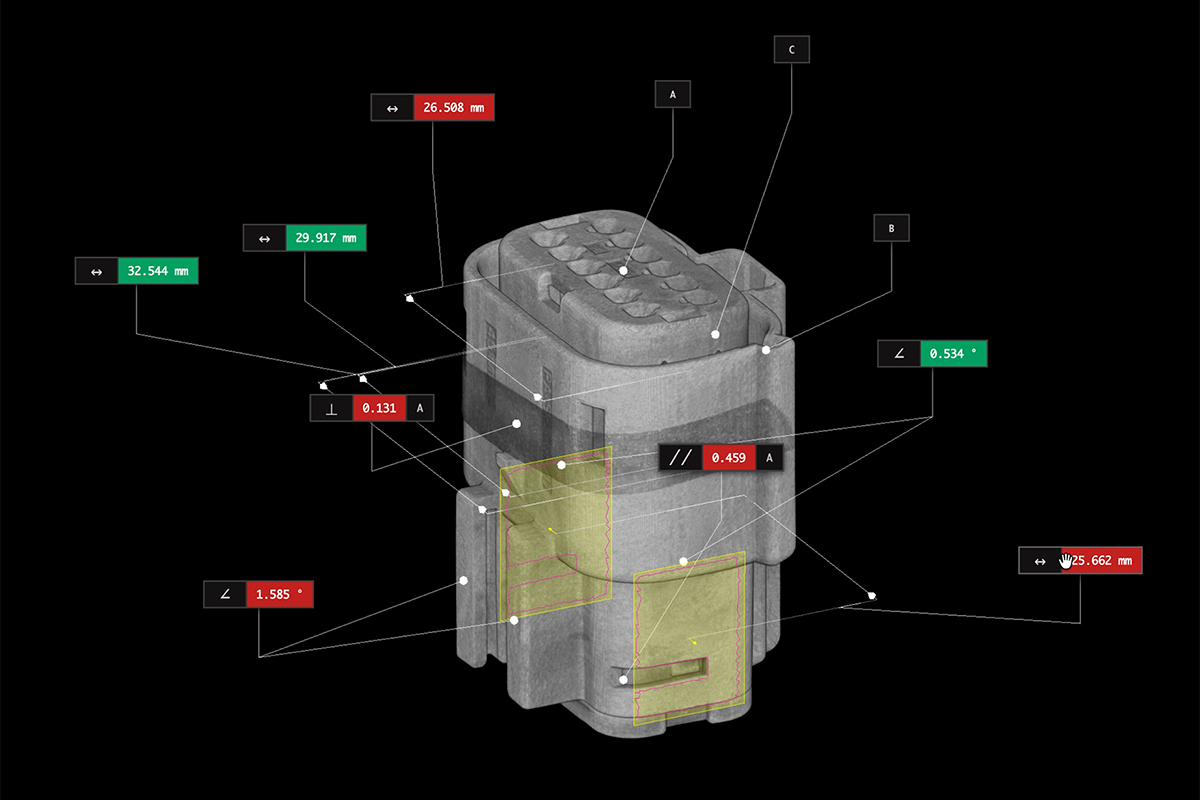Inside a contactless credit card
Do you recognize this object from a CT scan? You probably have one in your purse or wallet right now. The chip and outline give it away: it’s a contactless credit card.
Contactless payment is powered by RFID (Radio-frequency identification) technology and near-field communication (NFC). When you hold your card close—usually a few inches or so—to a card reader, its antenna picks up a signal and activates the chip.
This antenna is the thin copper wire you see in the CT scan that traces three of the card’s sides before coiling around the dual-interface EMV (Europay, Mastercard and Visa) chip. This small network is sandwiched between two exterior sheets of plastic laminated together. Since the antenna covers most of the card’s area, it’s possible that any part of it can actually pick up the frequency—not just the chip as many of us think!

Once activated, the chip generates a one-time cryptographic code and sends it along with your payment information through electromagnetic waves to initiate a transaction. The card reader answers by transmitting this data to the card processing network—for this card, VISA. The network runs a quick fraud screening, and if everything checks out, it pushes the request to the card issuer itself.

After clearing a few more security hurdles, the card issuer greenlights the transaction and notifies the point-of-sale card reader. This all happens in a matter of seconds, making tap to pay up to ten times faster and more secure than inserting the chip or swiping your card.










